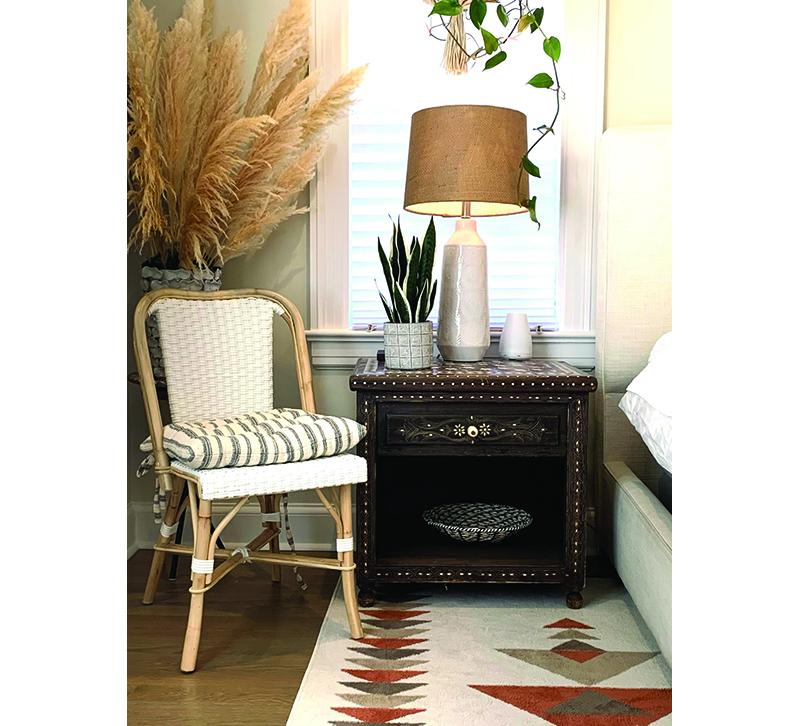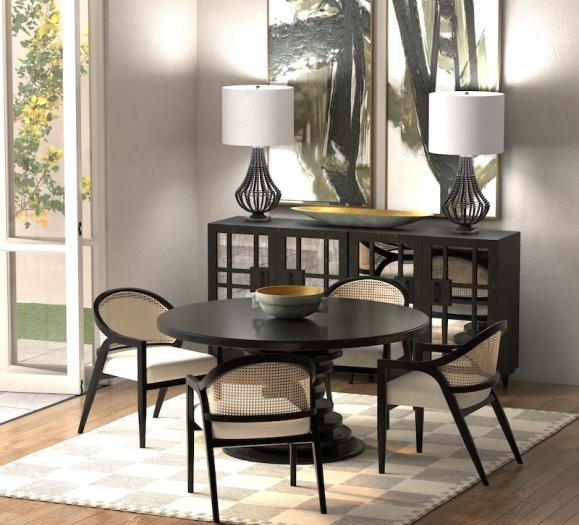While a smaller home or room may require careful consideration for furniture dimensions, storage functionality and layout, it doesn’t mean that space can’t be designed with the character and the luxury one might expect to see in a larger space.
“So often people living in small spaces feel like they are living with ‘less than,’ but living in a small space doesn’t mean living without luxury,” says Libby Langdon, Principal and Lead Designer of Libby Langdon Interiors, in New York. Langdon should know. She literally wrote the book: Libby Langdon’s Small Space Solutions. The possibilities for high design in smaller spaces are endless, simply by paying attention to the details.
Layout is job number one when designing a small space. Small spaces don’t necessarily mean the smallest furniture; not putting enough furniture or cramming lots of small furniture into a space can actually make it feel smaller. Instead, suggests Langdon, “one long sleek cabinet looks and feels so much better than two or three oddly matched smaller items.” Where upholstery is concerned, something sleek works here as well. Thinner sofa arms, rather than overstuffed or track arms, can free up a couple of feet of space. Choose furnishings for multifunctionality — an ottoman that doubles as seating or storage, for example — and look for pieces that can be tucked away, such as bar stools that slide under a counter or high console table.
Getting the layout correct and bringing in the right size furniture is a good foundation for a luxury feel in a small space. While designers understand dimension and scale, consumers may find this more challenging. At retail, consider setting room vignettes with signage that help shoppers see how a larger piece of furniture would work in a smaller space.
For that high design feel, too, accessories and color can make the room. “Go big or go home,” says Langdon, when discussing accessories for small spaces. Kurt Miller, of Jacob Lukas Design, in Chicago, agrees. “People are afraid that small space equals small scale,” he says. “In reality, it’s a chance to do something bold.” Color, he notes, can actually make the room. “People have a misconception that light paint will make a room look larger,” he says. “You’re not adding room by painting it white. Color keeps the space from being boring.” Miller suggests finding a focal point when designing a small space and working around that. It might be a large piece of art, lighting or even a bold wallpaper treatment. In small spaces, color and pattern can add interest and that luxe feel when used intentionally.
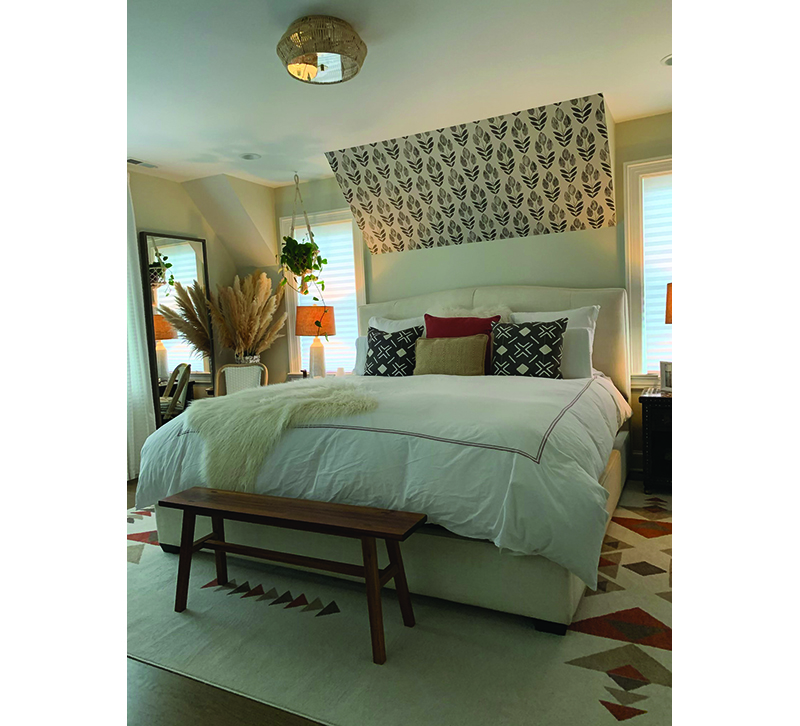
Scaling Up
In smaller spaces, using the room’s vertical space as well as its square footage can make a room feel larger. Miller suggests using a beautiful lighting fixture closer to the ceiling than a standard chandelier height to draw the eye up, or starting draperies at the ceiling to lengthen windows. Artwork can be hung higher as well. Bringing attention to the height of a room visually opens up the space, he says. Langdon seconds that thought. “Think vertically when designing a small space,” she says. “Anytime you can have drapes, bookcases or items go all the way up to the ceiling, it tricks your eye and makes the ceiling seem higher and the room feel bigger. Having tall elements also adds an element of luxury and makes a room feel truly designed and finished.”
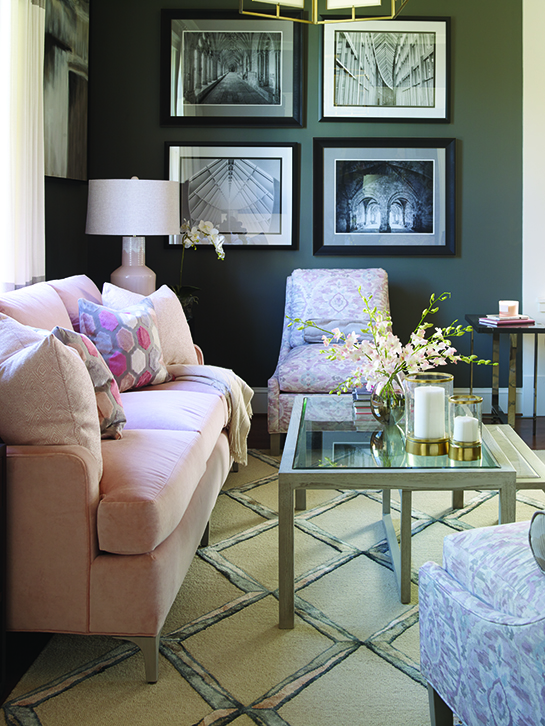
Accentuate The Positive
While you don’t want to clutter a small space with lots of things, a high-end accent piece or two will go a long way into creating a luxury feel. And you don’t necessarily want those accent pieces to be smaller scale. For artwork and rugs especially, trending toward larger actually makes a room look larger. “A large area rug gives an expansive feel and makes a room seem much larger than a small rug which can visually cut the space in half,” says Langdon. “Big artwork or multiple pieces grouped together help a small space look larger. It adds personality and makes it feel finished.” When creating a luxury feel in a small space, it makes sense to spend a little more on these luxury focal points to deliver that luxe, and larger, room feel. For add-on sales at retail, showcasing larger-scale rugs, artwork, lighting and accessories in small space vignettes can help customers envision how that would work in their spaces as well.
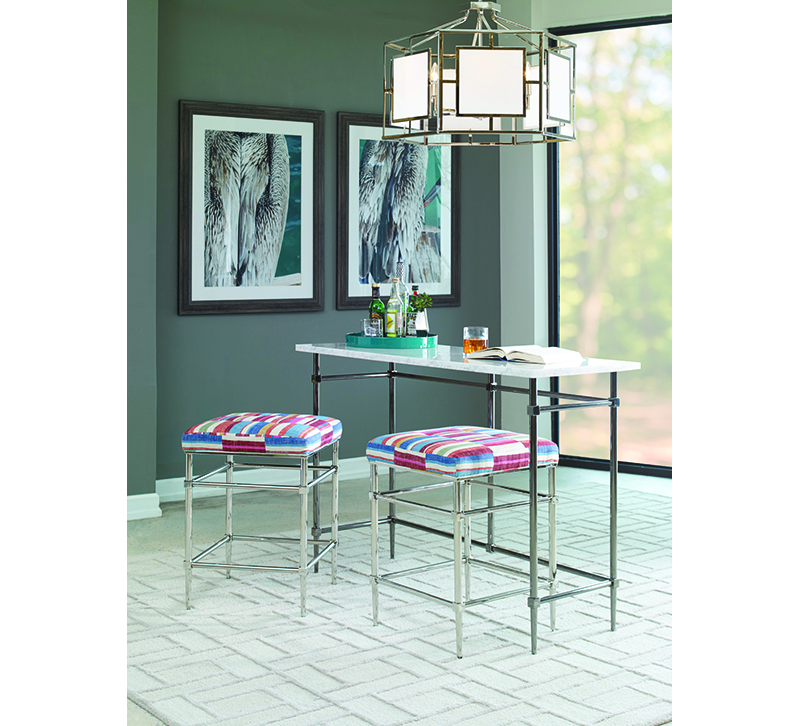
Lighten It Up
In smaller rooms or apartments, lighting is essential. Natural light, when available, can enhance the size of any room, and is something to be considered when installing window treatments. “Keep in mind when hanging drapes in a small space to let the panels “stack” on the wall on either side of the window frame when they are open rather than letting them hang inside the window frame,” says Langdon. “You don’t want to lose any valuable natural light, and when the drapes are open it makes your window seem wider than it really is.”
Good lighting is also key. Tall floor lamps can lengthen a room vertically, she adds. “They add scale and height and offer a much better spread of light. You also want to think in terms of lighting all four corners of a small space. If there’s square footage that’s dark, it’s as if it isn’t there, which closes the room in and makes it feel smaller.”
Lightening up a room can also be achieved via materials. A glass table that sits in the center of a dining room won’t close in a smaller room the way a wood table might. Choosing tables with glass tops and unique table bases can add even more interest.
Mirrors are another way to add light to a room. “Mirrors reflect light and visually open up the space,” says Miller. He notes that in his smaller-space designs, they tend toward simpler mirrors, although different styles are always in play when working within the design of the room.
With the right attention to the accessories, color and lighting, small spaces can offer up character, luxury and a coziness that might be more difficult to achieve in an expansive space. It’s all about paying attention to the details at the start of the design or buying process. “Sometimes living in a small space is the ultimate luxury,” says Langdon



